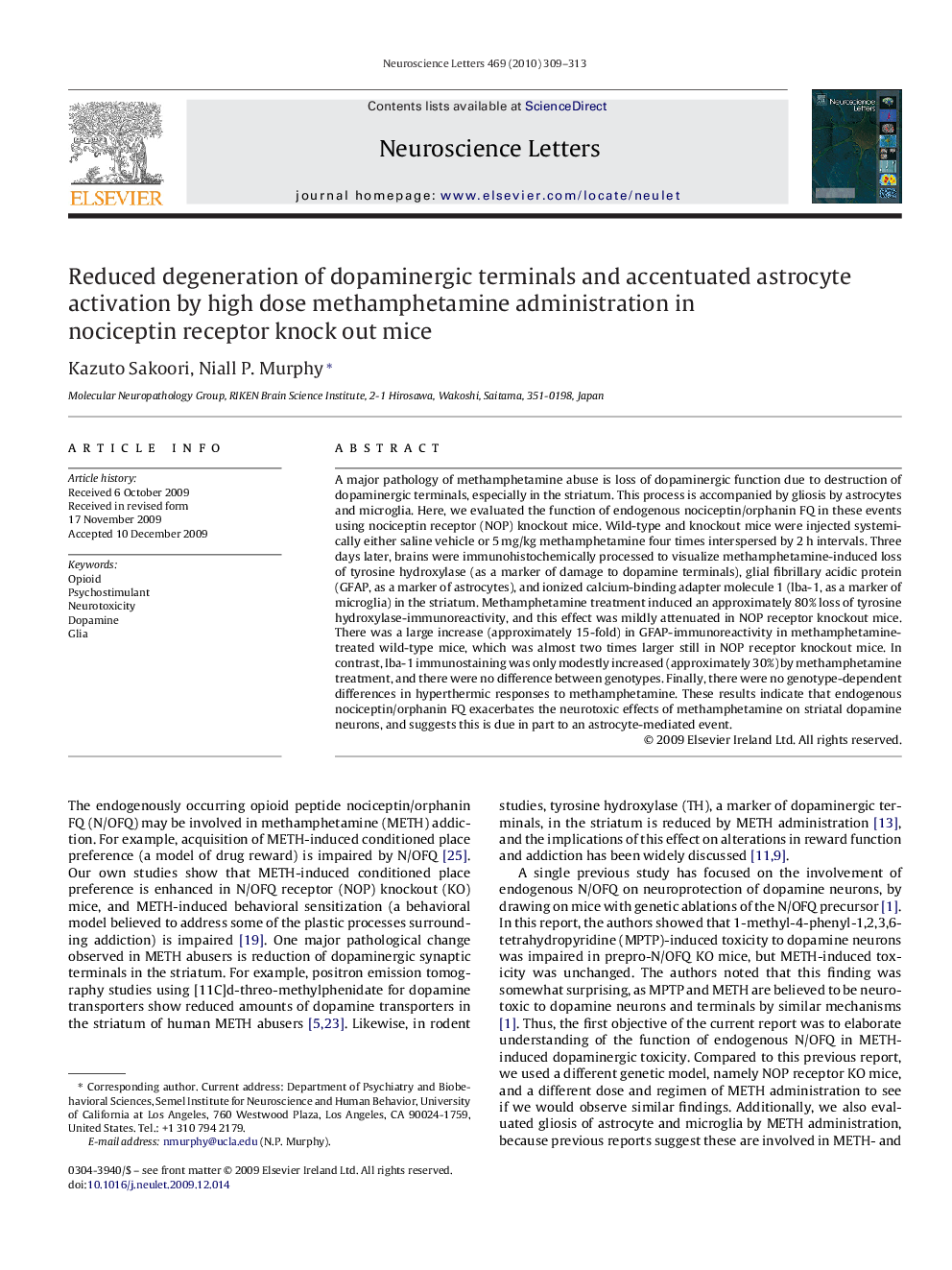| Article ID | Journal | Published Year | Pages | File Type |
|---|---|---|---|---|
| 4346382 | Neuroscience Letters | 2010 | 5 Pages |
Abstract
A major pathology of methamphetamine abuse is loss of dopaminergic function due to destruction of dopaminergic terminals, especially in the striatum. This process is accompanied by gliosis by astrocytes and microglia. Here, we evaluated the function of endogenous nociceptin/orphanin FQ in these events using nociceptin receptor (NOP) knockout mice. Wild-type and knockout mice were injected systemically either saline vehicle or 5Â mg/kg methamphetamine four times interspersed by 2Â h intervals. Three days later, brains were immunohistochemically processed to visualize methamphetamine-induced loss of tyrosine hydroxylase (as a marker of damage to dopamine terminals), glial fibrillary acidic protein (GFAP, as a marker of astrocytes), and ionized calcium-binding adapter molecule 1 (lba-1, as a marker of microglia) in the striatum. Methamphetamine treatment induced an approximately 80% loss of tyrosine hydroxylase-immunoreactivity, and this effect was mildly attenuated in NOP receptor knockout mice. There was a large increase (approximately 15-fold) in GFAP-immunoreactivity in methamphetamine-treated wild-type mice, which was almost two times larger still in NOP receptor knockout mice. In contrast, Iba-1 immunostaining was only modestly increased (approximately 30%) by methamphetamine treatment, and there were no difference between genotypes. Finally, there were no genotype-dependent differences in hyperthermic responses to methamphetamine. These results indicate that endogenous nociceptin/orphanin FQ exacerbates the neurotoxic effects of methamphetamine on striatal dopamine neurons, and suggests this is due in part to an astrocyte-mediated event.
Related Topics
Life Sciences
Neuroscience
Neuroscience (General)
Authors
Kazuto Sakoori, Niall P. Murphy,
